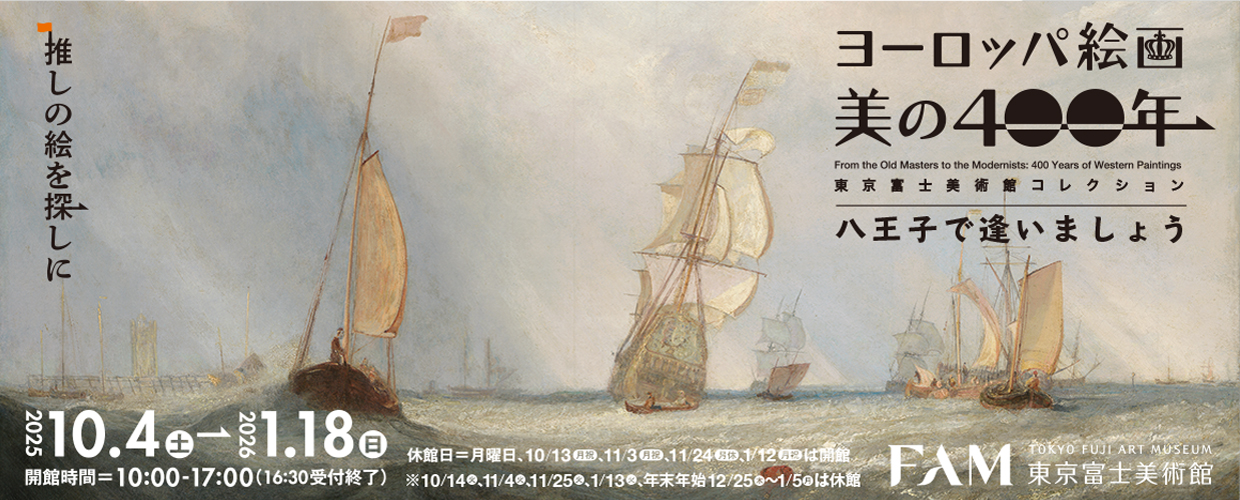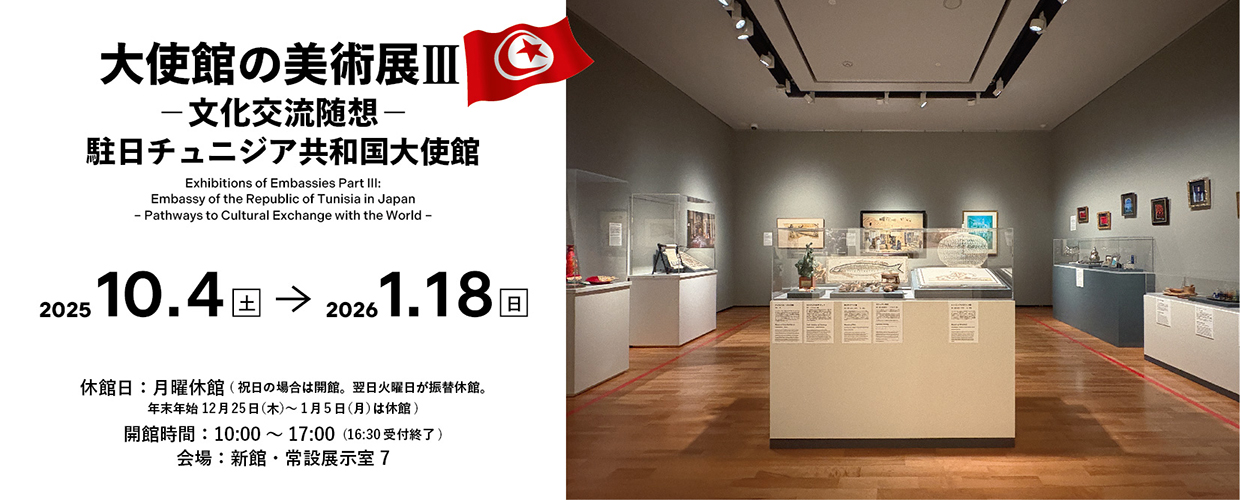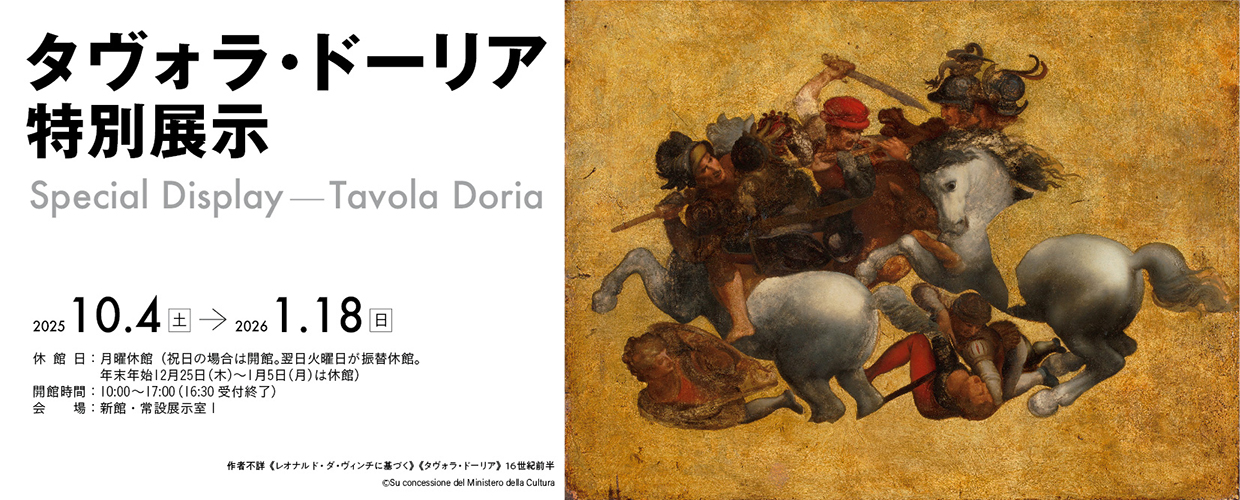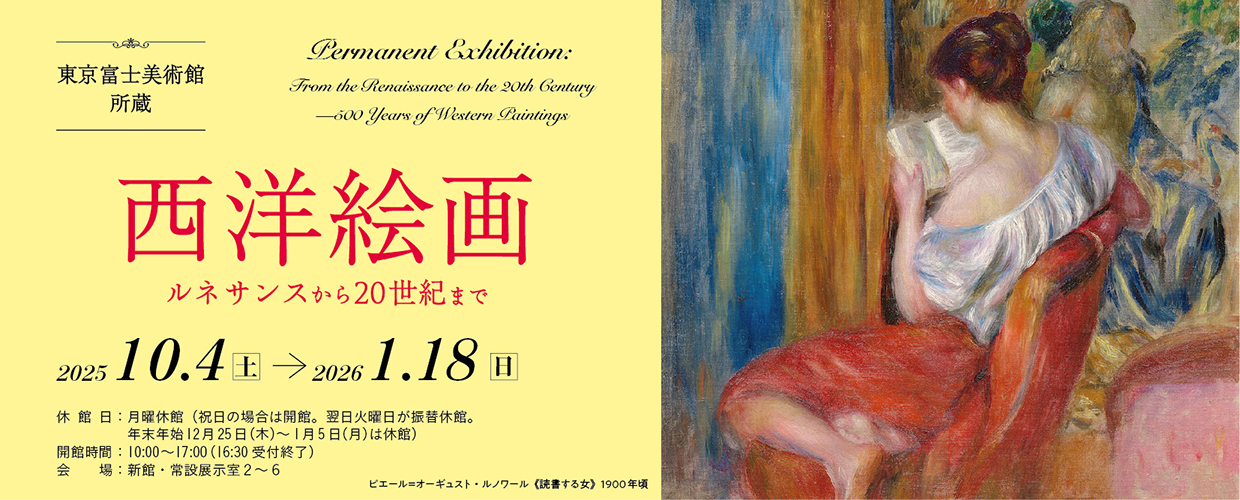c. 1745/Oil on canvas
204.0 x 198.0 cm
SUMMARY
This magnificent large masterpiece in Rococo style is considered as one of the most important works of François Boucher. In this painting, the painter featured an iconic image of Venus, at which he was best, among the subjects of mythological paintings, and freely and lightheartedly depicted the goddess of beauty who was born in the water and arrived on the land. Given that it is an approximately two by two meter square canvas, it is no doubt that the work should have been painted by a certain important commission. And also, there might have been another painting that would be paired with this painting, but the details of who commissioned this painting, or whether such a paired painting was created have been unknown. This work originally belonged to Sir Richard Wallace, a major British art collector, and used to decorate the wall of the Château de Bagatelle, which Sir Wallace owned in the Bois de Boulogne in the suburbs of Paris. Later, at the beginning of the 20th century, this painting was acquired by Baron Rothschild, a Viennese collector who was known for his sophisticated, elegant taste, and was later housed in the collection of the Metropolitan Museum of Art in New York. Thereafter, the Metropolitan Museum sold off this painting, and finally it became a part of the collection of the present owner Tokyo Fuji Art Museum. In the center of the painting, Venus, who came up out of the water, is sitting on the rock covered with blue and yellow cloths, with cupids flying around her and Three Graces serving her. From the air above, Zephyrus, god of wind, is trying to place a crown of victory on the head of Venus. One of the cupids descending at the side of Zephyrus holds an apple, symbol of eternal beauty, in its hand. On the left, Triton, a son of god of sea Neptune, and nymphs are joyfully playing in the water. Due to its beautiful and sensual naked body, the nymph reclining right in front of Venus and facing the front exhibits a characteristic which is typical of Boucher and becomes an element in this picture that most strongly attracts the eyes of viewers. In terms of theme, this painting is close to The Birth of Venus (Nationalmuseum, Stockholm), which Boucher exhibited at the 1740 Salon, while in terms of composition, it is similar to a series of four paintings that he created in his very last years (Kimbell Art Museum, Fort Worth, Texas, U.S.). Compared to a number of the works that Boucher exhibited at the Salons, a certain degree of perfection cannot be seen in this painting. That’s probably because the painting was originally made to be hung at a place where people would see it from a certain distance such as the upper part of a wall or ceiling of a large room. It is speculated that the painting was probably calculated sophisticatedly by Boucher to give viewers a better impression when it is viewed from a distance. In any case, a group of nude figures as shown in this painting is the subject matter in which this painter was most skilled. Such nude figures epitomize the Bouchersque style that is full of Rococo taste. This painting is definitely a fine work of mythological painting that demonstrates the painter’s innate decorative talent and skill.
ARTIST
François Boucher
1703-1770
List of artworks by the same artist
INFORMATION
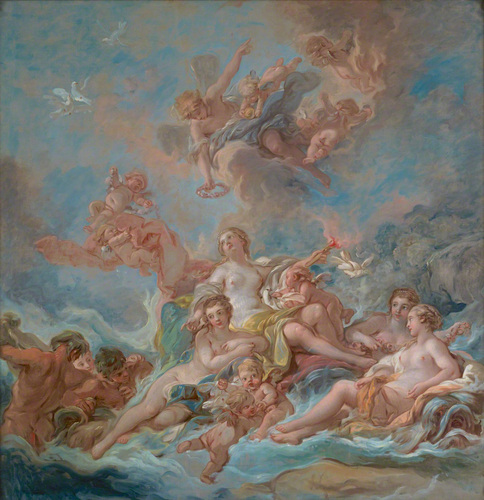
Tuesday, May 26 - Sunday, August 16, 2020
Through the Eyes of René Huyghe: The Splendor of French Paintings — Formation and Transformation of the “Grande Manière” Osaka City Museum of Fine Arts (Osaka, Japan)
Tuesday, February 4 - Sunday, March 29, 2020
Through the Eyes of René Huyghe: The Splendor of French Paintings — Formation and Transformation of the “Grande Manière” Kyushu National Museum (Fukuoka, Japan)
Saturday, January 12 - Saturday, May 4, 2019
500 Years of Western Paintings: Collection of Tokyo Fuji Art Museum Shanghai PowerLong Museum (Shanghai, China)
Tuesday, October 23 - Sunday, December 23, 2018
500 Years of Western Paintings: Collection of Tokyo Fuji Art Museum Tsinghua University Art Museum (Beijing, China)
Sunday, October 1 - Sunday, December 3, 2000
Masterpieces of Western Paintings from the Renaissance to the 20th Century National Dr. Sun Yat-sen Memorial Hall (Taipei, Taiwan)
Tuesday, October 14 - Sunday, November 30, 1997
Masterpieces of Western Oil Painting from the TFAM Collection Hong Kong Museum of Art (Hong Kong, China)
Saturday, June 14 - Monday, July 7, 1997
400 Years of Art in the East and West—From the Collection of Tokyo Fuji Art Museum Ishikawa Prefectural Museum of Art (Ishikawa, Japan)
Friday, October 16 - Thursday, November 5, 1992
Masterpieces of European Oil Painting: The Paintings in 20th Century from the Renaissance to Impressionism China Art Gallery (Beijing, China)
Saturday, November 3 - Sunday, December 2, 1990
Masterpieces of European Oil Painting Ho-Am Art Museum (Yongin-gun, Kyunggi-do, South Korea)
Saturday, September 22 - Sunday, October 21, 1990
Masterpieces of European Oil Painting Ho-Am Gallery (Seoul, South Korea)
Provenance: Sir. Richard Wallece, London Baron Eugène de Rothschild, Vienna Metropolitan Museum, New York
EXPLORE

You can search and browse content on a platform across museums and archival institutions nationwide, and create My Gallery (online exhibition).

You can view the work in High-resolution.

The Official Navigator of the Tokyo Fuji Art Museum is voice-over artist, actress and vocalist Yoko Honna. She narrates the Japanese-language presentation and audio guidance segments of the works of Western paintings on display at our New Wing Permanent Gallery.

